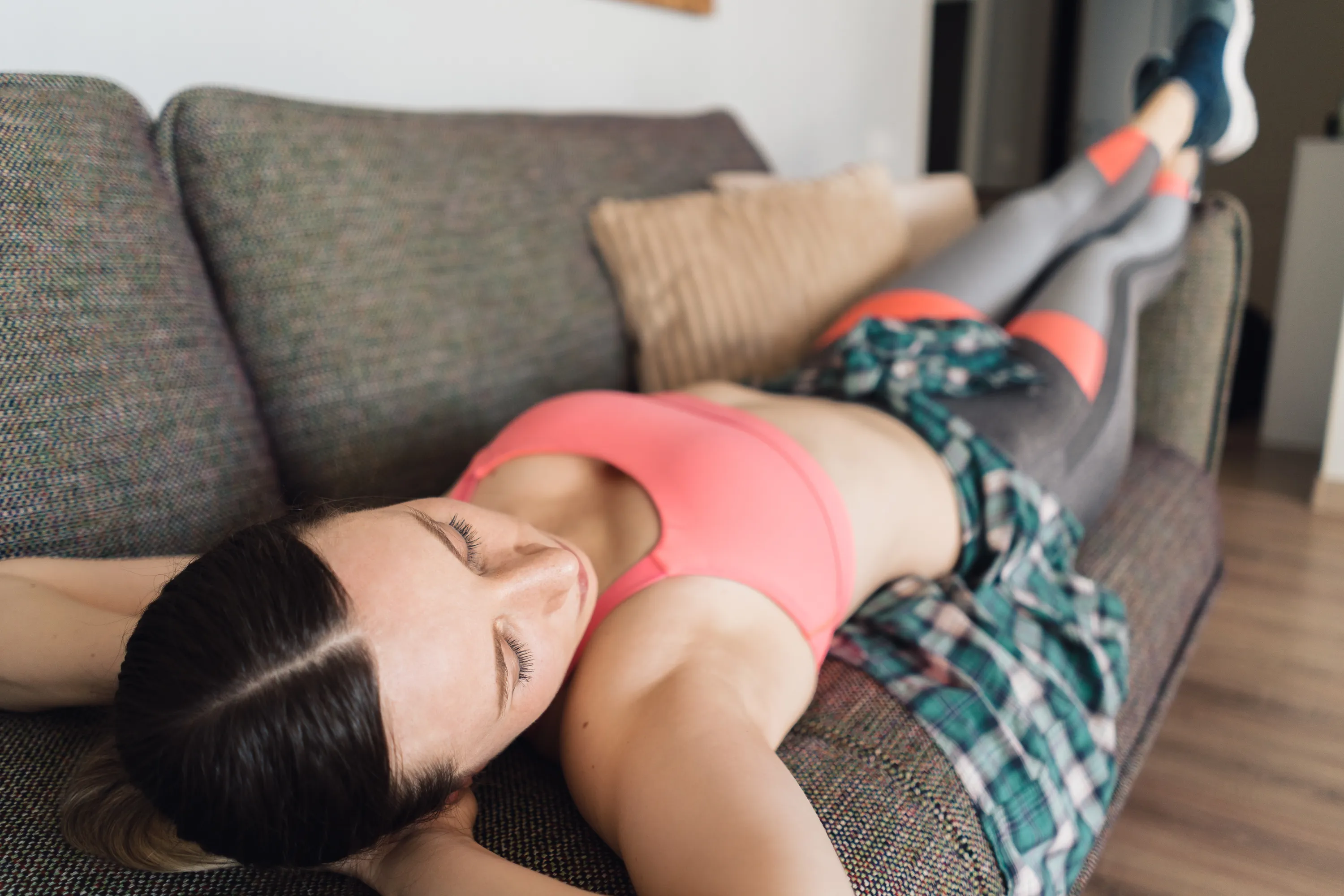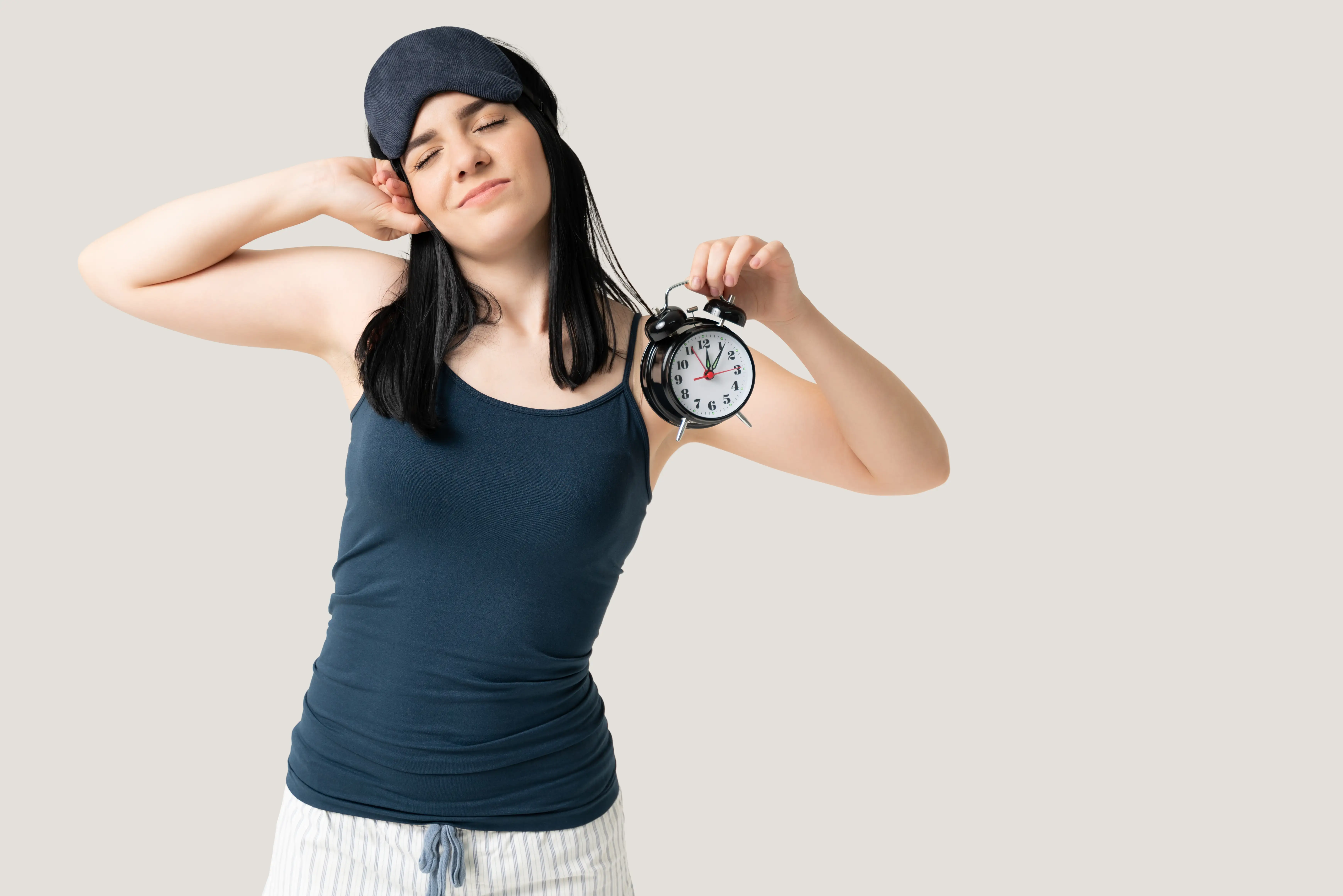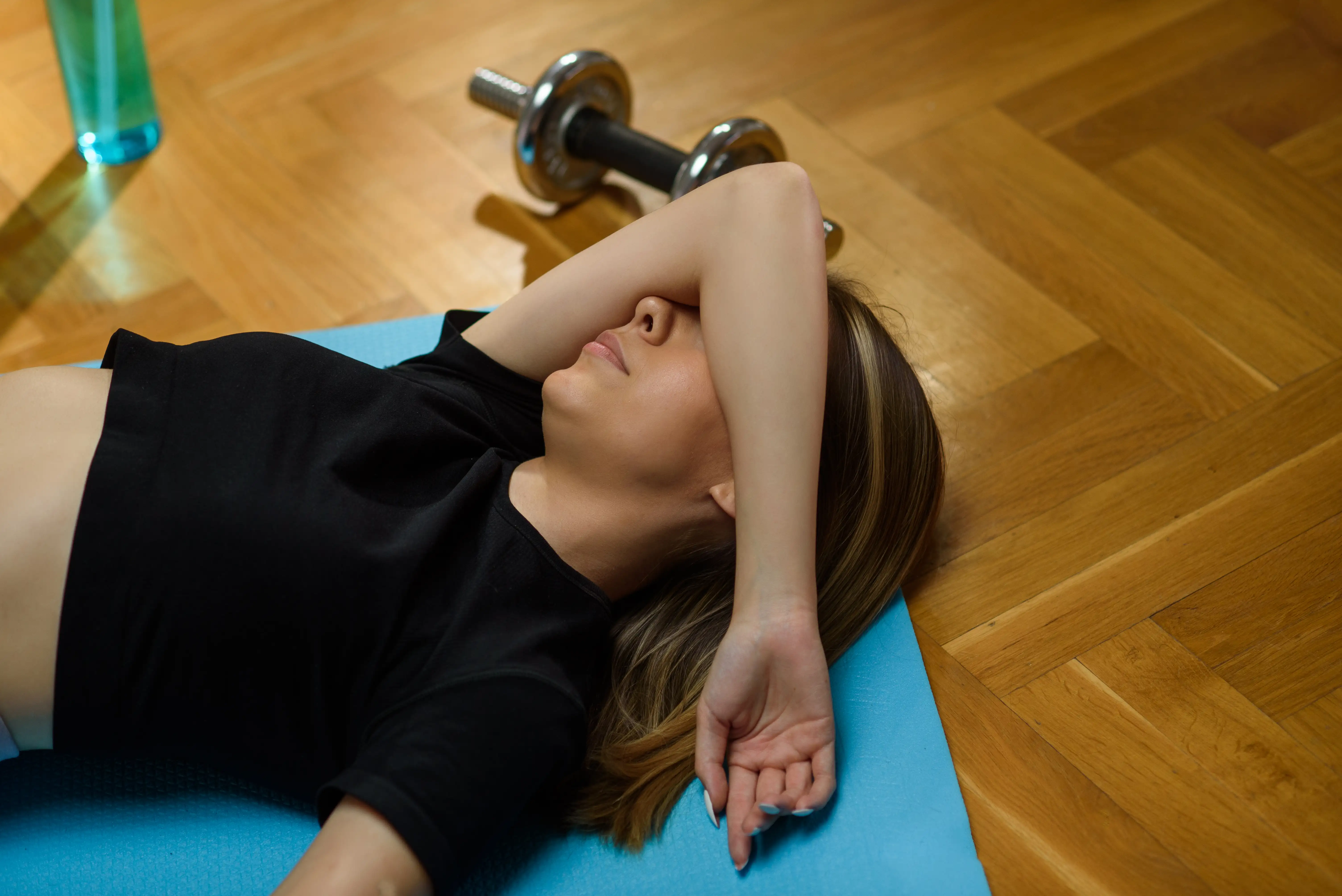Sleep apnea is a common yet often overlooked sleep disorder that can significantly impact both health and quality of life. Characterized by repeated interruptions in breathing during sleep, it can lead to daytime fatigue, heart problems, and metabolic issues.
For individuals with sleep apnea, incorporating physical exercise into daily life may not only improve overall fitness but also help reduce the severity of symptoms.
In this article, we explore how exercise interacts with sleep apnea, beginning with a breakdown of what this condition is and the different types that exist.
What Is Sleep Apnea?
Sleep apnea is a sleep disorder in which breathing repeatedly stops and starts during sleep. These pauses can last for a few seconds to minutes and may occur dozens of times per hour, often going unnoticed by the sleeper. The three main types of sleep apnea are:
Obstructive Sleep Apnea (OSA)
OSA is the most common form and occurs when the muscles in the throat relax excessively during sleep, leading to a blockage of the upper airway. Risk factors include obesity, anatomical features like a narrow airway, and sleeping on the back.
Central Sleep Apnea (CSA)
CSA is less common and involves the brain failing to send proper signals to the muscles responsible for breathing. This type is usually associated with underlying health conditions like heart failure, stroke, or the use of certain medications.
Complex Sleep Apnea Syndrome (Mixed)
Also known as treatment-emergent central sleep apnea, this type is a combination of obstructive and central sleep apnea. It’s typically diagnosed when someone being treated for OSA with a CPAP machine continues to experience CSA-like symptoms.
How Sleep Apnea Affects The Body
Sleep apnea doesn't just disrupt your sleep; it has far-reaching effects on many systems in the body. The repeated pauses in breathing prevent restful sleep and reduce oxygen levels, triggering a chain reaction of negative health outcomes.
Oxygen Deprivation
When breathing stops during sleep, oxygen levels in the blood drop. This deprives the brain and other organs of the oxygen they need to function properly. Over time, this can impair cognitive function, increase inflammation, and place extra stress on vital systems, especially the heart and lungs.
Impact On Cardiovascular Health
One of the most serious consequences of untreated sleep apnea is its effect on the heart. The frequent drops in oxygen and repeated awakenings activate the sympathetic nervous system, raising blood pressure and increasing the risk of conditions like hypertension, arrhythmias, heart disease, and even stroke.
Consequences For Energy And Mood
Sleep apnea fragments your sleep cycle, preventing the body from entering deep, restorative stages of rest. As a result, people with sleep apnea often wake up feeling tired, regardless of how many hours they spend in bed. This constant fatigue can lead to irritability, difficulty concentrating, and an increased risk of anxiety and depression.
Common Symptoms of Sleep Apnea
- Loud, Persistent Snoring: One of the most recognizable signs of sleep apnea, especially obstructive sleep apnea, is loud snoring that may be interrupted by pauses or choking sounds.
- Gasping or Choking During Sleep: Episodes where a person suddenly gasps for air or wakes up choking often indicate breathing interruptions throughout the night.
- Excessive Daytime Sleepiness: Because sleep apnea disrupts the normal sleep cycle, people often feel overly tired or drowsy during the day, even after a full night’s sleep.
- Morning Headaches: Waking up with a headache is common in those with sleep apnea due to oxygen deprivation and poor sleep quality overnight.
- Difficulty Concentrating: Fragmented sleep can impair cognitive function, leading to trouble focusing, forgetfulness, and brain fog during the day.
- Mood Changes and Irritability: Lack of restorative sleep often causes emotional instability, irritability, and symptoms of anxiety or depression.
- Dry Mouth or Sore Throat in the Morning: Breathing through the mouth during sleep, which is common in sleep apnea, can leave the mouth and throat feeling dry upon waking.
- Frequent Nighttime Urination (Nocturia): Sleep apnea can disrupt the body’s hormone regulation, leading to increased nighttime urination, which further interrupts sleep.
Benefits Of Physical Exercise For Sleep Apnea

Physical exercise is a powerful tool for managing sleep apnea. While it may not replace medical treatment like CPAP, regular activity can significantly improve symptoms and enhance overall health. Here's how exercise supports better sleep and breathing in people with sleep apnea.
Weight Management And Airway Improvement
Weight plays a major role in the development and severity of obstructive sleep apnea. Exercise helps manage body weight and can lead to anatomical improvements that reduce airway obstruction.
- Reduces Excess Weight Around The Neck And Throat: Carrying extra weight, particularly in the upper body and neck area, can narrow the airway and worsen obstructive sleep apnea. Exercise helps burn fat and reduce this pressure, making it easier to breathe during sleep.
- Helps Decrease Airway Obstruction: With consistent weight loss and muscle toning, the muscles surrounding the airway become firmer, lowering the chances of collapse or obstruction during sleep.
Enhancing Sleep Quality
Exercise doesn’t just help you fall asleep faster; it improves the quality of your sleep. People with sleep apnea often spend less time in deep sleep, which exercise can help restore.
- Increases Slow Wave and REM Sleep: Physical activity has been shown to increase time spent in deep sleep stages, like REM sleep and Slow-wave sleep, which are essential for restoration and mental recovery. This leads to more refreshing and uninterrupted sleep.
- Reduces Frequency And Severity Of Apnea Episodes: Moderate aerobic or resistance exercise can lower the number of apnea events per hour, improving breathing patterns and reducing nighttime awakenings.
Boosting Cardiovascular And Respiratory Health
Sleep apnea puts a strain on the heart and lungs, increasing the risk of serious health problems. Exercise strengthens these systems, making the body more resilient and reducing complications.
- Improves Heart Function: Since sleep apnea puts stress on the heart, strengthening the cardiovascular system through exercise can counteract some of that strain, lowering blood pressure and improving circulation.
- Strengthens Respiratory Muscles: Activities that encourage deep breathing, such as swimming, walking, or yoga, help train and reinforce the muscles used for respiration, making breathing more efficient both day and night.
Recommended Types Of Exercise For Sleep Apnea

Not all forms of exercise have the same effect on sleep apnea, but many can contribute to improved breathing, better sleep quality, and stronger cardiovascular and respiratory health.
A well-rounded fitness routine that includes aerobic activity, strength training, and breathing exercises can be especially beneficial.
Aerobic Exercises
Aerobic activities such as walking, jogging, cycling, and swimming are excellent choices for people with sleep apnea. These exercises help increase your heart rate, burn calories, and improve overall cardiovascular health, all of which can contribute to weight loss and reduce airway obstruction.
In addition to weight management, aerobic exercises enhance lung capacity and endurance. Over time, they train your body to use oxygen more efficiently, making breathing easier during both the day and night. Regular cardio workouts can also lead to fewer breathing interruptions during sleep and better oxygen saturation throughout the night.
Strength Training
Incorporating strength training into your routine can further support breathing by improving muscle tone throughout the body, especially in the upper airway. Stronger muscles around the neck and throat can help keep the airway open during sleep, reducing the likelihood of obstruction.
It’s important to maintain a balanced workout plan that includes both upper and lower body exercises. Focusing solely on cardio or lifting without structure may lead to muscular imbalances.
A well-balanced strength training program complements aerobic activity and contributes to a more stable and supportive physical foundation.
Breathing And Relaxation Exercises
Breathing-based exercises such as yoga and diaphragmatic breathing are particularly helpful for those with sleep apnea. Yoga combines gentle physical movement with focused breathing, which can reduce tension in the body and promote better oxygen flow.
Practicing relaxation techniques before bed, like deep belly breathing, helps activate the parasympathetic nervous system, easing the body into restful sleep.
These exercises improve control over the respiratory system and reduce stress, which is often a contributing factor to poor sleep quality and apnea flare-ups.
How Often Should People with Sleep Apnea Exercise?

For people with sleep apnea, regular physical activity is essential but should be approached thoughtfully. Experts generally recommend aiming for at least 150 minutes of moderate-intensity aerobic exercise per week, spread across most days.
Incorporating strength training and breathing exercises a few times per week can further improve symptoms. However, individual needs and tolerance vary, so personalizing the routine is important.
Exercise Guidelines and Precautions
Starting an exercise regimen when you have sleep apnea requires some care. Here are important guidelines to help you begin safely and get the most from your workouts.
Starting Safely
Before jumping into a new fitness plan, it’s crucial to take certain precautions to avoid injury or complications. Here’s what you need to keep in mind.
- Consult Your Doctor Before Beginning: Always check with your healthcare provider before starting new exercises, especially if you have underlying health conditions.
- Begin with Moderate Intensity: Start with moderate activities that don’t overly strain your body, gradually increasing intensity and duration over time.
Tips For Maximizing Benefits
Once you’ve started exercising, these tips can help you get the most from your efforts while managing sleep apnea.
- Consistency Is Key: Regular, ongoing exercise provides the best results for improving sleep apnea symptoms and overall health.
- Avoid Exercising Right Before Bedtime: Exercise raises adrenaline and body temperature, which can interfere with falling asleep if done too close to bedtime.
- Monitor Symptoms And Adjust Accordingly: Pay attention to how your body responds, and modify your routine if you notice increased fatigue, breathing issues, or other concerns.
Limitations and Cautions
While physical exercise offers many benefits for managing sleep apnea, it is important to understand that exercise alone is not a complete treatment. Exercise can help reduce symptoms, improve sleep quality, and support overall health, but it does not replace medical interventions like CPAP therapy, oral appliances, or surgery when these are necessary.
Sleep apnea is a complex condition that often requires a combination of treatments tailored to the individual. Relying solely on exercise without following your healthcare provider’s recommendations could lead to inadequate management and increased health risks.
Always use exercise as a complementary strategy alongside prescribed therapies, and communicate openly with your medical team about your symptoms and progress.
FAQs
Can Exercise Improve Sleep Apnea Symptoms?
Yes, regular exercise can reduce the severity of sleep apnea symptoms by improving weight, cardiovascular health, and sleep quality, but it is not a standalone cure.
What Types of Exercise Are Best for People With Sleep Apnea?
Aerobic exercises, strength training, and breathing exercises like yoga are ideal, as they improve cardiovascular health, muscle tone, and respiratory function.
Can I Exercise If I Have Untreated Sleep Apnea?
Yes, but consult your doctor first. Exercise is beneficial but should complement medical treatment, especially if symptoms are severe.
Does Weight Loss From Exercise Cure Sleep Apnea?
Weight loss can significantly reduce symptoms, especially in obstructive sleep apnea, but it may not completely cure the condition for everyone.
Conclusion
Physical exercise is a valuable part of managing sleep apnea, offering benefits like weight control, improved breathing, and better sleep quality. While it can reduce symptoms and support overall health, exercise should complement, not replace, medical treatments such as CPAP.
By combining regular physical activity with professional care, people with sleep apnea can take important steps toward healthier, more restful nights and improved daily well-being.
Karen Barnard
Karen is a Human Movement Science expert and a certified sports nutrition and massage therapist. At Sleepiverse, she combines her passion for human movement science and sleep health to educate herself and her readers about healthier sleep. In addition to writing articles, Karen manages a fitness studio offering private training, athletic conditioning, and sports massage therapy. She focuses on providing people with a holistic environment for people to reach their health goals, often incorporating stretch therapy to promote mental tranquillity and help people improve their sleep.


